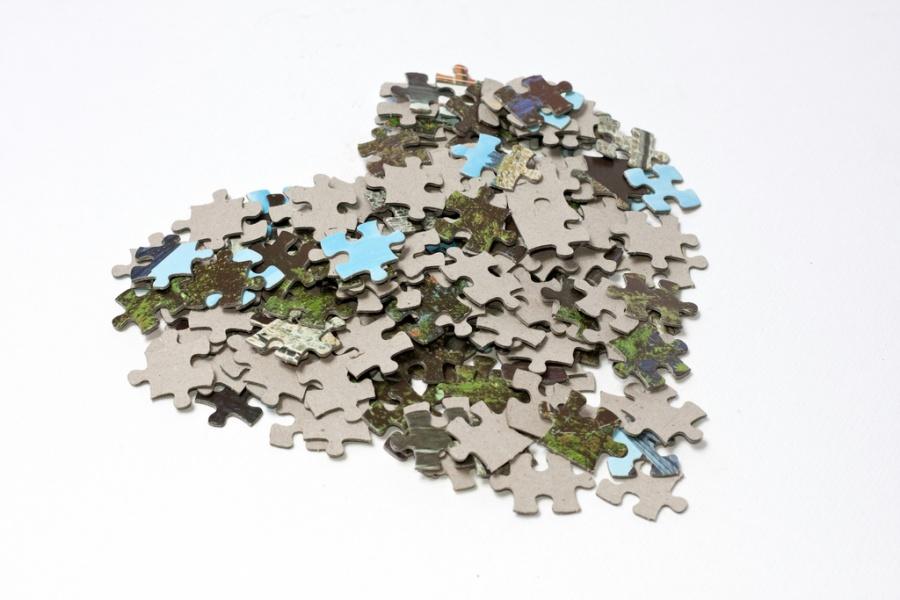Forget the forums: Autism needs a cure
A pile with lots of small jigsaw puzzle pieces having a gray back and a front picture made of cyan and green colors. They are arranged in the shape of a heart, on a white background.
March 9, 2017
Autism needs a cure. From 2000 to 2012, the last year the Center for Disease Control updated their statistics, the number of children with autism more than doubled; their most recent report says that one in 68 children have autism.
These numbers fascinate me. Something is being introduced into our environment that is causing this, and no one knows what it is or why. Autism is an issue that is important to me; when I began researching it, I came across something that follows me around wherever I go.
Autism is difficult to describe; there is a wide range of symptoms, such as repeated behaviors, delayed or no speech, communication issues and others as the list goes on. What people seem to forget is that autism is a spectrum. From mild to severe, you could sit two individuals with autism down and you’d never believe they live with the same disorder.
Organizations and clinics adopted the puzzle piece as the official symbol for autism, but it has become the subject of some censure.
Critics express concern that it sends the message that people with autism are something that needs to be solved.
“Autism doesn’t need a cure,” individuals write across forums and blogs all over the internet.
Parents with children and individuals with autism have been speaking about how they feel the disorder is perceived. They embrace what autism is to them: the quirks, the trials and even the anxiety.
You can say you don’t need a cure. And you know what? That is perfectly fine. I’m glad to hear someone is so content with who they are that they have no need to change themselves.
But what of the screaming child that beats their head against the wall because they’re so frustrated they can’t communicate? What of the middle school child engaging in violent behaviors towards their classmate because they’re angry and don’t realize they can hurt someone? What of the girl so lost in her own world her parents have to change her diapers long after her period begins? What of the children wiping feces on the walls, unable to attend school, moved into institutions once they get too old or their parents pass away?
More and more, people seem to be supporting the idea that they wouldn’t change a thing. For an individual, that’s fine.
If you don’t want a cure, don’t take one, and embrace what you’ve been given. For countless families, however, the hope of a cure is something they desperately hold onto.
Someone right now is staring into their child’s eyes, and their child isn’t looking back. Someone is crying while their child sleeps because they’re sixteen now and they’ll never be able to support themselves.
Still others are doing everything they can; they are funding institutions and furiously researching, trying everything they can, because there are too many children who are unable to take advantage of basic human rights.
Autism needs a cure.



